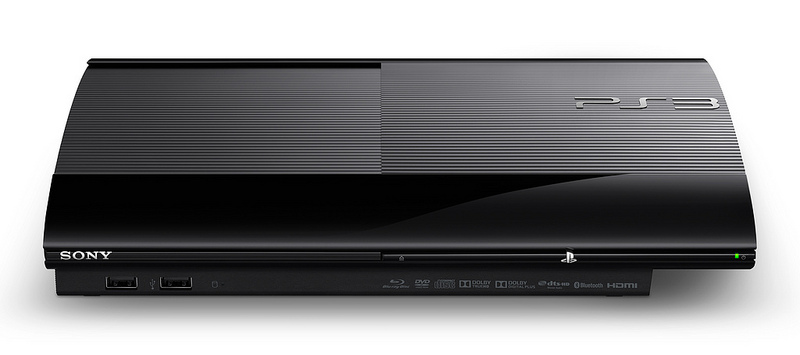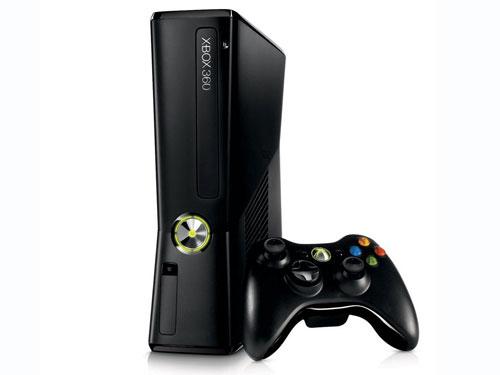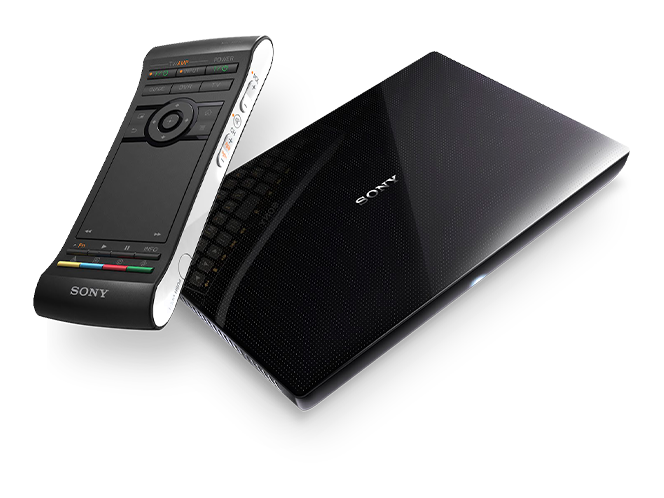How Will the PS4 Surprise Us?
 Saturday, February 2, 2013 at 12:59PM
Saturday, February 2, 2013 at 12:59PM The current generation of video game consoles has been the longest lasting of any to-date. After more than six and seven years on the market, respectively, both the Playstation 3 and XBox 360 are really showing their age. At 6PM EST on February 20th, Sony is expected to unveil the Playstation 4 in New York City and officially kick off the next generation of video game consoles.
 The current console-generation has easily been Sony’s least successful. Not so much in terms of units sold (the PS3 and XBox 360 are pretty much neck-and-neck in worldwide hardware sales), but in terms of profitability. The PS3 was an incredibly over-engineered piece of hardware, and had a lot of bleeding edge technology in it at the time of launch (the Cell processor and Blu-ray, specifically, drove manufacturing costs through the roof). This meant that even though the PS3 was significantly more expensive than its competition at launch, Sony was losing hundreds of dollars on each unit sold. It took years until the hardware sales became profitable. Even at this stage, after several cost-reducing hardware revisions, it’s expected that Sony is not really turning a significant profit on each PS3 sold.
The current console-generation has easily been Sony’s least successful. Not so much in terms of units sold (the PS3 and XBox 360 are pretty much neck-and-neck in worldwide hardware sales), but in terms of profitability. The PS3 was an incredibly over-engineered piece of hardware, and had a lot of bleeding edge technology in it at the time of launch (the Cell processor and Blu-ray, specifically, drove manufacturing costs through the roof). This meant that even though the PS3 was significantly more expensive than its competition at launch, Sony was losing hundreds of dollars on each unit sold. It took years until the hardware sales became profitable. Even at this stage, after several cost-reducing hardware revisions, it’s expected that Sony is not really turning a significant profit on each PS3 sold.
Games designed specifically with the PS3 in mind (exclusives like the Uncharted and Resistance series come to mind) have accomplished incredible things, even as the console continued to age, but the custom nature of the hardware also made development difficult, requiring very manual management of system resources. In comparison, Microsoft’s long history with software development tools allowed developers to create XBox 360 games comparatively easily, and to really tap into the resources available on Microsoft’s console hardware. Cross-platform games tended to perform better on the XBox 360, meaning that on many AAA titles, the extra effort that went into engineering the PS3 was effectively wasted when it came to the end user experience.
Sony is the only video game console manufacturer to completely trump their competition in back-to-back console generations with the original Playstation and the Playstation 2. The PS3 has been successful in terms of market penetration (it has sold more units than the Nintendo Entertainment System, and is on par with the original Playstation), and can only be seen as a “failure” when compared against the complete market dominance of the PS2. Sony went from a nobody in the video game industry to the front runner in a single generation. Keep in mind, several other companies had come and gone before Sony entered (NEC with the TurboGrafx 16, Panasonic with the 3DO), and their move into the notoriously expensive video game space was widely seen as a huge risk. Ultimately, Sony’s success decimated Sega, one of the long-time industry players, and put Nintendo back on their heels for two successive generations, but it was far from a sure thing when the Playstation first launched.
Make no mistake, the lessons the PS3 offered around managing manufacturing costs and making development easier have been hard-learned by Sony, and as a result, we can expect nothing less than a complete 180 degree turn in terms of the PS4.
On the hardware side, widely publicized leaks let us know the PS4 will likely use an eight-core AMD processor with an integrated GPU about as powerful as a Radeon 7850. It’s also expected to have 4GB of incredibly fast GDDR5 RAM, similar to what’s used on high end video cards. More importantly, the RAM is expected to be unified, rather than split between graphics and system memory as seen in the PS3. The storage medium is expected to remain Blu-ray (if Sony wants to get fancy, they may include support for 100GB Blu-ray discs), and we can likely expect the machine to contain a hard disk in the 500GB to 1TB range. In layman’s terms, this means the PS4 is expected to be roughly as powerful as a current mid to upper-range PC. The standardized nature of video game consoles and focused nature of the OS tend to allow developers to get better performance out of a given generation of hardware, though, so, once developers get a handle on all the ins and outs of the console, real-world performance should be similar to that of a current high-end PC, but at a fraction of the price. More importantly for Sony, the standardized nature of the hardware should make it easier to turn a profit on system sales, while simultaneously making software development easier.
 Microsoft’s next XBox is expected to be very similar in terms of specifications. It’s expected to use a similar AMD processor, but rumours place the GPU as one generation older than the one used in the PS4. The next XBox is expected to ship with 8GB of RAM, but it’s also expected to be slower DDR3 RAM as opposed to the GDDR5 RAM expected in the PS4. Microsoft’s OS is expected to be heavier than Sony’s, reserving from 2-3.5GB of the available RAM, whereas as Sony’s OS is expected to use around 512MB of the available RAM.
Microsoft’s next XBox is expected to be very similar in terms of specifications. It’s expected to use a similar AMD processor, but rumours place the GPU as one generation older than the one used in the PS4. The next XBox is expected to ship with 8GB of RAM, but it’s also expected to be slower DDR3 RAM as opposed to the GDDR5 RAM expected in the PS4. Microsoft’s OS is expected to be heavier than Sony’s, reserving from 2-3.5GB of the available RAM, whereas as Sony’s OS is expected to use around 512MB of the available RAM.
Due to the significant differences in hardware between the current generation and next generation of consoles, backwards compatibility is not expected to be integrated on either platform.
The incredibly similar nature of the hardware means that cross-platform titles will likely perform almost identically across both systems. The next XBox will have slightly more RAM available, but the faster RAM in the PS4 will allow the hardware resources to be better managed. The slightly better GPU in the PS4 should allow for better performance, but the reality is that cross-platform developers will shoot for the lowest common denominator, and then tweak ports for each platform to utilize their unique strengths, so differences will ultimately be minimal.
This means that the “winner” of the next console generation (assuming it doesn’t end up in a stalemate) will come down to factors well outside the hardware in the machines:
- Exclusive game titles
- Online services (Xbox Live, Playstation Network)
- Additional non-gaming services
 On the exclusive game title front, Sony has had a definite advantage over Microsoft. While the XBox 360 has had its fair share of exclusive titles, the big system sellers have primarily been limited to Halo and Gears of War. Other attempts at creating system-sellers have either fallen flat (Viva Piñata) or been completely mis-managed (Fable). Sony, on the other hand, has a large list of titles with broad appeal, including Gran Turismo, the Uncharted Series, the Resistance Series, Ratchet and Clank, the God of War series, and Little Big Planet, among others. The depth of Sony’s exclusive titles is impressive, and they aren’t afraid to really take chances in developing new exclusive IPs (case in point, Uncharted, Resistance and LBP are all new to this generation).
On the exclusive game title front, Sony has had a definite advantage over Microsoft. While the XBox 360 has had its fair share of exclusive titles, the big system sellers have primarily been limited to Halo and Gears of War. Other attempts at creating system-sellers have either fallen flat (Viva Piñata) or been completely mis-managed (Fable). Sony, on the other hand, has a large list of titles with broad appeal, including Gran Turismo, the Uncharted Series, the Resistance Series, Ratchet and Clank, the God of War series, and Little Big Planet, among others. The depth of Sony’s exclusive titles is impressive, and they aren’t afraid to really take chances in developing new exclusive IPs (case in point, Uncharted, Resistance and LBP are all new to this generation).
In terms of online services, Microsoft has had the advantage this generation. From launch, XBox Live has been a very good service, especially when it comes to the core purpose of these machines, gaming. Sony’s Playstation Network was launched on the PS3 as a very half-baked service, and spent a great deal of time just getting up to speed. Set-backs like Sony’s account database being hacked and slow system updates have just aggravated things. Features like cross-game chat and private parties make online gaming a much better experience on the 360 than on the PS3, meaning the annual fee for XBox Live Gold compared to Sony’s free service has been pretty much a non-issue in the current generation. Sony has definitely learned a lot this generation (Playstation Plus is a fantastic service, but is really set up to soar with the next generation), and we can expect them to continue to grow, but I don’t expect Microsoft to sit on their laurels, either (e.g. Expect Microsoft to heavily integrate Skype into the next XBox experience). The battle on network services may come down to patents and back-end infrastructure.
Finally, this brings us to non-gaming services. On this front, the current generation consoles are pretty much neck-and-neck. Both have a wide variety of apps available to access online content (YouTube, Netflix, Hulu Plus, etc.), and both have an integrated video rental store. The experience varies by console (Netflix is a better experience on the PS3, Microsoft’s video store is easier to navigate), but this piece is effectively a draw in the current generation.
So what can we expect from the next generation of consoles?
Microsoft has made their plans pretty clear. They mean to use the XBox to dominate the living room. This means integration of gaming, television and network services in one box. Television subscribers already using Microsoft’s MediaRoom platform (AT&T UVerse, TELUS Optik TV, Deutsch Telekom) can currently use the XBox 360 as a set-top box. Expect this integration to go even further, allowing subscribers to use the Xbox as a PVR, and fully integrate their TV experience with the rest of the Internet in a more seamless fashion.
If Sony wants to go toe-to-toe with Microsoft for the living room, they have an existing platform and partner that may allow them to use the Playstation 4 to gain an even stronger foothold in the living room, regardless of the user’s television service provider: Google.
 Sony is one of the few hardware manufacturers actually offering a Google TV box on the market, but Google TV has been far from a slam dunk for anyone. The platform is woefully under-supported, and the hardware is too expensive when compared to other platforms that offer a similar experience like Apple TV and Roku. Sony has used its Playstation brand as a trojan horse to launch DVD and Blu-ray previously, and if they have decided to partner with Google (i.e. If Google is offering enough money), it could give Google TV the launch platform it sorely needs to gain traction in the marketplace. In exchange, Google could potentially offer a revenue share agreement with Sony (similar to what they do with Mozilla for the FireFox browser) that would help Sony offset the hardware costs of their platform. It’s a win-win situation.
Sony is one of the few hardware manufacturers actually offering a Google TV box on the market, but Google TV has been far from a slam dunk for anyone. The platform is woefully under-supported, and the hardware is too expensive when compared to other platforms that offer a similar experience like Apple TV and Roku. Sony has used its Playstation brand as a trojan horse to launch DVD and Blu-ray previously, and if they have decided to partner with Google (i.e. If Google is offering enough money), it could give Google TV the launch platform it sorely needs to gain traction in the marketplace. In exchange, Google could potentially offer a revenue share agreement with Sony (similar to what they do with Mozilla for the FireFox browser) that would help Sony offset the hardware costs of their platform. It’s a win-win situation.
Google TV integration would also allow the PS4 to do some things we really haven’t seen previously. The inclusion of HDMI in and out ports would mean the PS4 interface could be overlaid with your existing TV provider, simplifying the experience of integrating TV with the Internet. Google TV already does a good job of controlling a variety of PVR and set-top boxes, so this would, to some degree, negate Microsoft’s MediaRoom advantage (the full integration of MediaRoom into the XBox would likely still mean a better experience for people who use a MediaRoom-based TV service provider). Google TV would also give Sony access to other network services where they have been weak in the past - Google Voice could be used as a cross-platform and cross-game chat platform, Hangouts could be used for video chat, even Google’s Chrome browser could be used to finally provide a decent web browsing experience on the Playstation platform. This could all be done without adding any significant cost to the PS4 hardware, because it’s more than powerful enough to handle the services that Google TV offers.
 Finally, Sony does have one ace up its sleeve that could provide a real surprise. Sony purchased online game service provider Gaikai for $380 million last summer, but they haven’t really done anything with it. Sony could potentially use Gaikai for a few different PS4 services. They could easily use it to provide backward-compatibility with PS3 (and earlier generations) of games. For example, a user could stick a PS3 disc into the drive of the PS4 and it would tell the console to start that game on Gaika and allow the user to play, even without the ability to emulate the PS3 hardware. It would also provide an easy way for Sony to offer their one hour trials of new titles. If Sony really wanted to stun the industry, though, they could use Gaikai to provide a true “Netflix of games”. Imagine if a Playstation Plus subscription came with unlimited cloud access to a library of current and past Playstation titles? This is an area where Sony has a distinct advantage and under-utilized assets, and could provide very desirable services that Microsoft can’t easily match. The key to this working is latency, so Sony would definitely have to expand their network infrastructure, and this is another place where a partnership with Google could be advantageous. I still wouldn’t expect something like this to launch without hiccups, but it is the kind of “killer app” that could provide a real advantage in a very homogenous console generation.
Finally, Sony does have one ace up its sleeve that could provide a real surprise. Sony purchased online game service provider Gaikai for $380 million last summer, but they haven’t really done anything with it. Sony could potentially use Gaikai for a few different PS4 services. They could easily use it to provide backward-compatibility with PS3 (and earlier generations) of games. For example, a user could stick a PS3 disc into the drive of the PS4 and it would tell the console to start that game on Gaika and allow the user to play, even without the ability to emulate the PS3 hardware. It would also provide an easy way for Sony to offer their one hour trials of new titles. If Sony really wanted to stun the industry, though, they could use Gaikai to provide a true “Netflix of games”. Imagine if a Playstation Plus subscription came with unlimited cloud access to a library of current and past Playstation titles? This is an area where Sony has a distinct advantage and under-utilized assets, and could provide very desirable services that Microsoft can’t easily match. The key to this working is latency, so Sony would definitely have to expand their network infrastructure, and this is another place where a partnership with Google could be advantageous. I still wouldn’t expect something like this to launch without hiccups, but it is the kind of “killer app” that could provide a real advantage in a very homogenous console generation.
So what will ultimately happen with the next generation of game consoles? It’s far too early to tell, but on February 20th, we’ll finally get our first taste of what’s to come. I don’t expect we’ll get much more than a taste on that date; probably a first look at a new box, some description of hardware features, and possibly some demos created by some of Sony’s top developers (e.g. Maybe a view of the Uncharted engine running on the new hardware). If Sony has decided to integrate Google TV into the box, though, I wouldn’t be surprised to see that announced, and that could be huge news. The big reveals like launch date, launch titles and pricing will be left for E3 later this year. Stay tuned - this is going to be fun!
 360,
360,  PS3,
PS3,  PS4,
PS4,  XBox 360,
XBox 360,  Xbox,
Xbox,  console wars,
console wars,  consoles,
consoles,  games,
games,  video games in
video games in  Games
Games 
